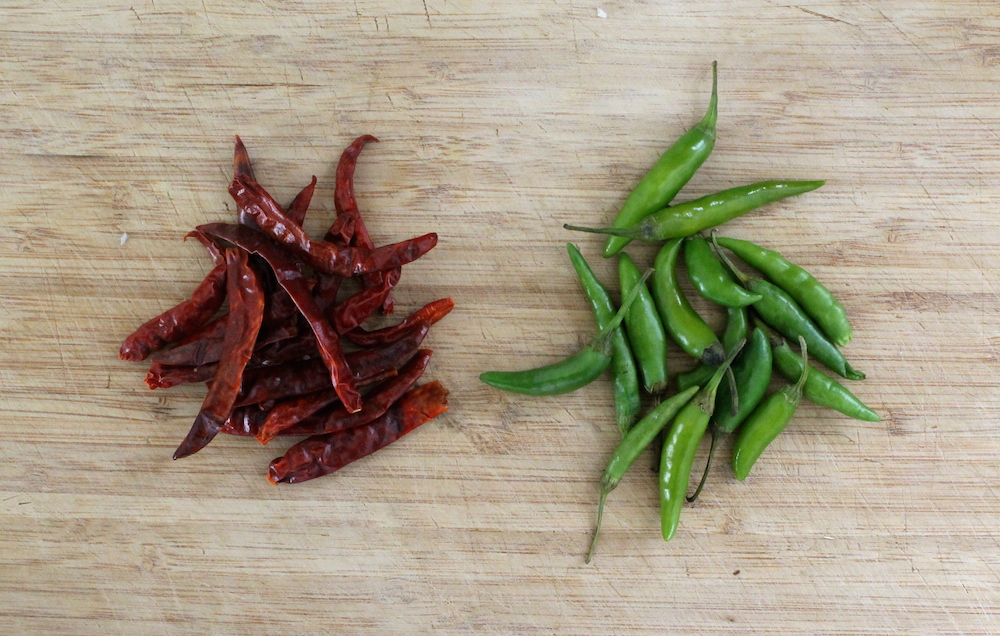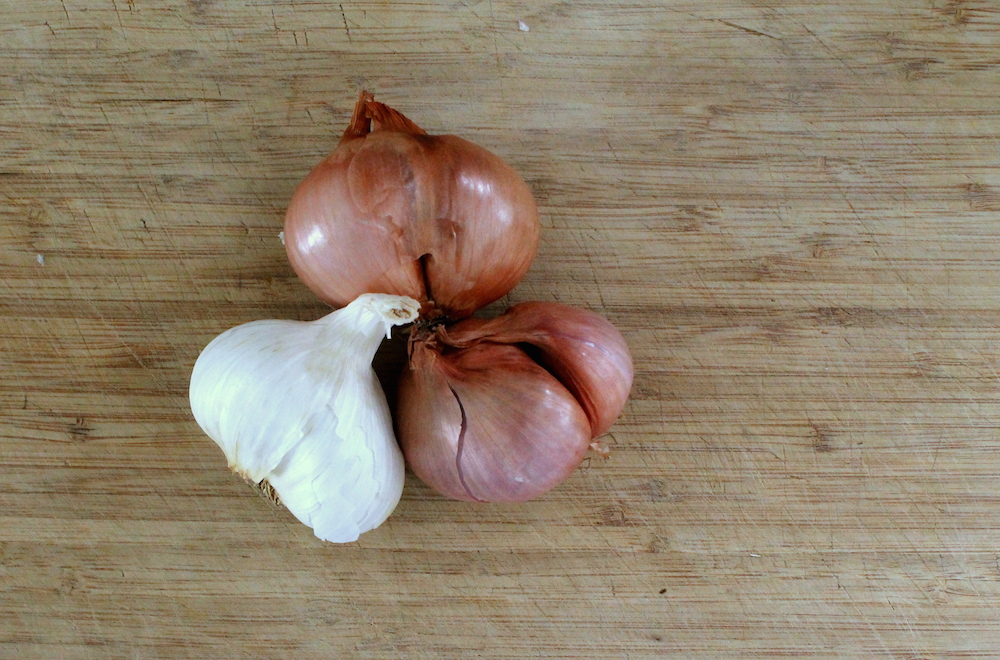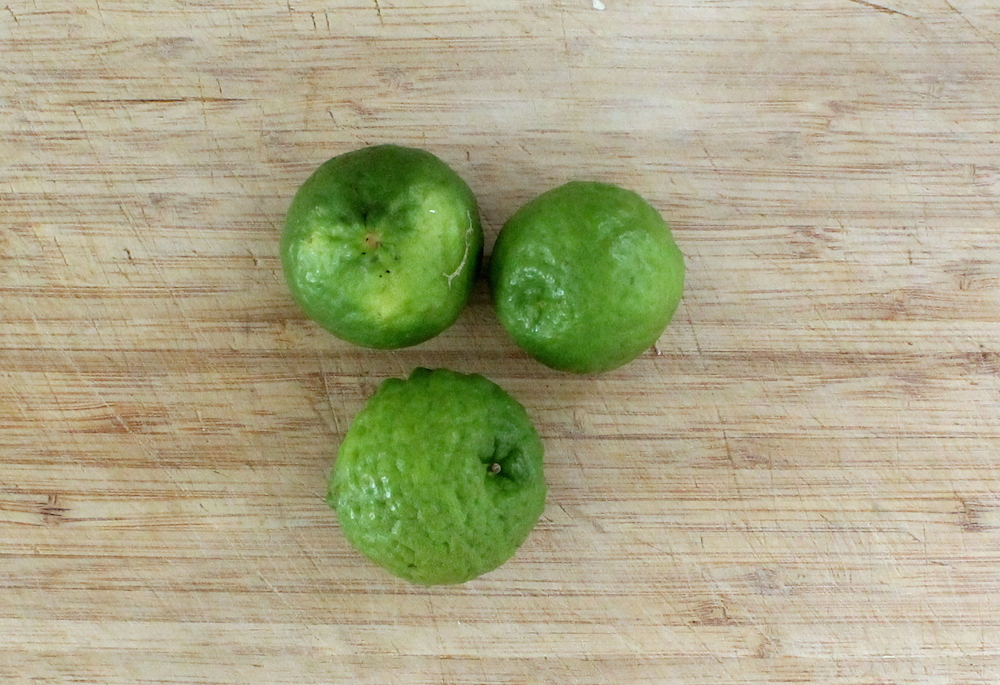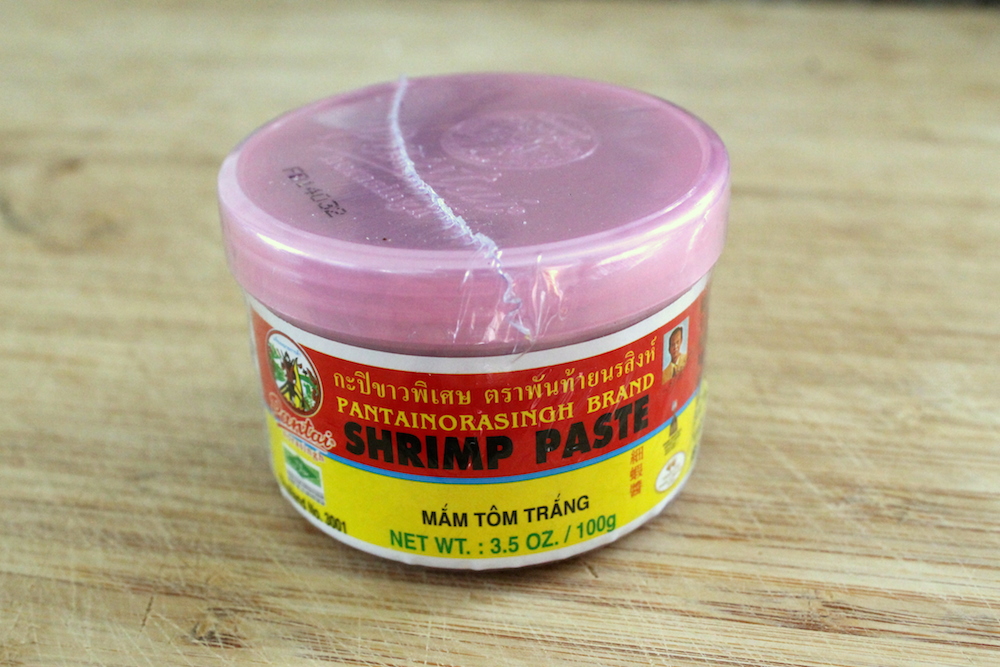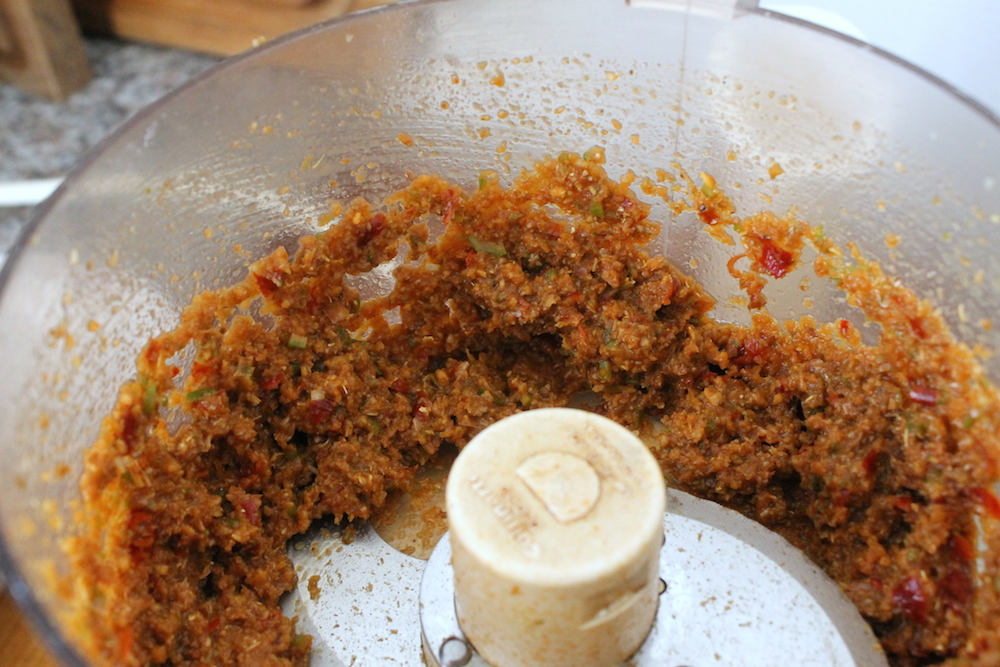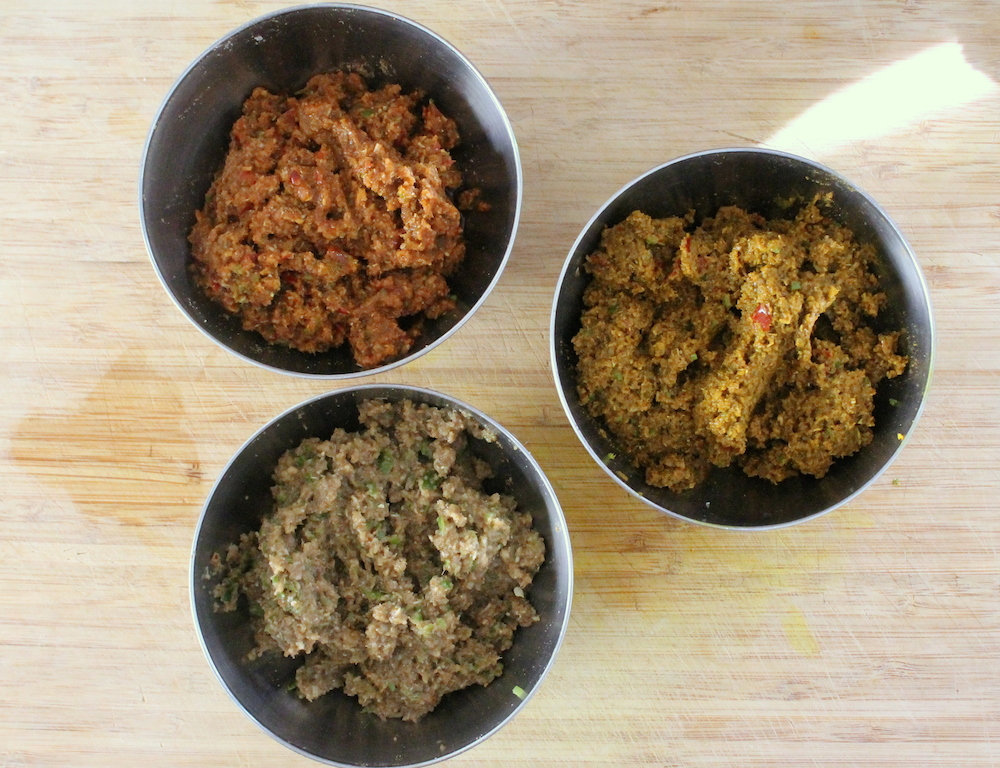
For many years, I was a slave to the power of store-bought Thai curry paste. The convenience was simply too good to pass up. Grab a jar of the Thai Kitchen stuff and dinner was only a quick simmer away. It was only after I amassed a solid collection of Thai cookbooks that I realized how much better curry could be if I started with fresh ingredients.
Making Thai curry paste at home isn’t terribly difficult, especially if you use a food processor. There are many Thai cookbook authors who may shudder at the thought of using an electric blade to chop and blend the paste — I’ll let them stick to the mortar and pestle. Yes, I have made curry paste by hand, and yes, it does have a different flavor and texture. Is that improved flavor and texture worth the extra effort? Not unless I’m trying to impress a Thai cook.
When using a food processor, the hardest part of making curry paste is finding the ingredients. Some, like dried chiles and whole spices, are easily found at most grocery stores these days. Others, like kaffir limes and fresh turmeric, can be a bit challenging. Berkeley Bowl, Rainbow Grocery, and Asian supermarkets like Ranch 99 are all good sources to obtain these items. In the ingredients list, I’ve included substitutes for some of the harder-to-find items. (The preferred ingredient is listed first.)
The most common curry pastes that I used to buy pre-made are categorized by their color: red, yellow, and green. After reading through several Thai cookbooks, it became clear that these three pastes have quite a bit in common. Their main ingredients — cumin, coriander, lemongrass, galangal, garlic, and shallots — are consistent throughout each variety. The items that give the pastes their own character are small in number. Red curry paste is fiery from an abundance of dried red chiles. Yellow gets a colorful, earthy boost from fresh turmeric root. Green is bright and crisp, spiked with fresh green chiles and a sprinkle of mustard seeds. Armed with this knowledge, it is easy to shift between styles of curry and personalize the recipes at home.
Here’s what you’ll need:

